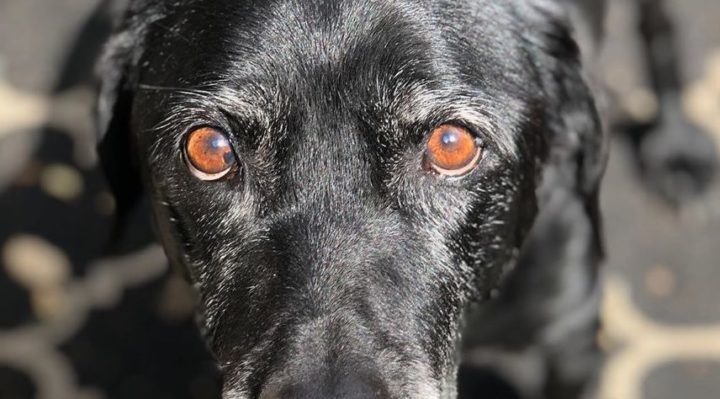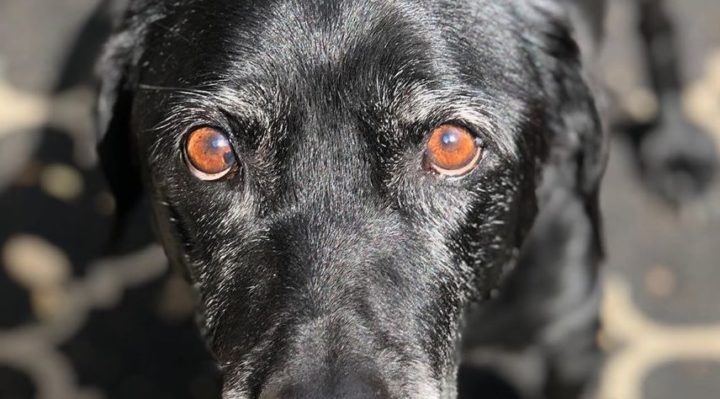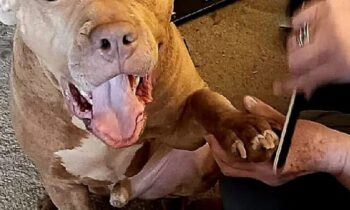


How are you and your family doing during this time of staying at home and social distancing?
Anecdotal evidence posted on social media indicates that most dogs and many cats are thoroughly enjoying the extra time at home they’re getting as a result of their humans being in quarantine.
Dog trainers and other dog professionals are predicting that, although time together right now for pets and their families may seem to have little downside, problems could arise in the future, when the humans go back to work and school and the pets are again left on their own many hours a day.
You know what those problems could be if you’ve ever had a dog with separation anxiety.
I asked dog professionals what pet owners can do right now, while they’re home with their pets 24/7, to prevent possible future separation anxiety when the humans return to work and school.
September B. Morn (Washington) Crate the dog in another room for a few hours at a time every day, starting at the time you would normally be leaving for work. Give the dog something good to chew on while they’re in “isolation” in their crates. Establish a routine. For dogs who worry when their owners leave, the first 20 minutes to an hour are usually the most anxious time for them.
Janet Velenovsky (Virginia) Just “disappear” for a while once or twice a day. Random times, varying lengths, but go completely out of sight and hearing. Walk around the block, garden, take a spin in the car.
Marilyn Marks (Connecticut) Structure, structure, structure. Schedules of some sort rather than a blob of a day. Same for kids. Time for play or training with the dog, time for crating even if people are home, time for walking, time for down time (non–dog-oriented) with the dog given something to do—could be crate time, chew time, step on leash relax time. Not all of those are required, depending on age or other needs, of course.
Natalie Morris (Nevada) I am trying to maintain some semblance of normality for my younger dog by crating him for a couple of hours during the week. Making sure he has time by himself with food, toys, and stuff like that as well. He just turned one year and has been with me for four months. So far, so good! I just started my one month of being home on Friday, so the dogs probably think I’m on a long weekend right now.
Terry Hill Cunningham (West Virginia) I’ve also been concerned about this with our new puppy. He has a crate. He eats in there and is very patient for you to let him out. But he doesn’t like being in there. I throw treats in during the day and give him KONGs in there. I’m just trying to keep him under threshold.
Jessica Stinson Hudson (Alabama)
▪ Work on settling on a mat, calmly reinforcing any relaxed behaviors (ears relax, chin rest, shifting on hip, etc.)
▪ Tether-time work on lowering the frustration of not being able to follow owner
▪ Reduce/eliminate times on furniture, including bed
▪ Make it a point to go through motions of leaving—getting dressed, showering with door closed, putting on shoes, picking up keys, but not actually leaving (desensitizing the trigger)
▪ Feed high-value meals in puzzle toys and step out for a while (even if owner just sits on porch)
▪ Increase mental stimulation and self-entertaining activities like food-dispensing toys
▪ Scatter kibble and practice walking away from dog, milling about the house and into different rooms
▪ Crate games that are random and fun, and the door isn’t always closed with dog inside
▪ Short, random crating of varying lengths of time, gradually adding duration, and paired with goodies.
Åse K. Lange (Norway) I stay at home most days anyway, and try to bring my dog(s) with me when I do go somewhere (whenever it’s safe and legal), so I am generally quite aware of the need to deliberately practice being-alone skills with new puppies and also regularly with adult dogs.
If they don’t do it already, work on getting your dogs used to sleeping in a separate room by themselves. If possible, make it the same room (and the same crate, x-pen, or bed) they are in when left alone in the house. It doesn’t have to be forever, just until they’re comfortable with it and then every so often thereafter.
If you have a car, work on the dog’s staying calmly in there while you go into the house. Or even just being crated in the car with you sitting up front. No need to go anywhere. Bonus: your dog may learn to be more quiet and calm in the car going forward, and you can also take the opportunity to work on improved manners getting into (on cue, happily) and out of (not until cued; calmly, attentively) the car.
If you have multiple dogs or pets who are closely bonded, work toward being able to leave them in different rooms occasionally.
Look up protocols for how to train dogs with severe separation anxiety, and practice all the small steps that don’t involve actually leaving the house (or just barely stepping outside): getting dressed, jingling keys, opening/closing the door, and so on.
Jules Weber (Maryland) I have a video giving step-by-step things you can do (via clicker training) of shaping yourself to go out the door.
Separation Anxiety Behavior Modification Training


Photo by Nathalie Mosbach Smith
Grooming at Home
For many dog owners, grooming is not something they’ve had much practice doing, because their dogs go to a groomer on a regular basis. Some dog owners don’t even clip their own dogs’ nails because they have it done professionally by a groomer or at their veterinary clinic.
Groomers are now on most states’ list of non-essential services.
Dog owners who haven’t groomed and haven’t done dog nails are “home alone” with dogs who definitely still need at least minimal grooming and certainly regular nail trims, as a matter of good hygiene and for the physical well-being of the dog.
I asked dog professionals for their tips for beginners on grooming at home.
Abigail Witthauer (Alabama) From my facility’s groomer, Rachel McBride, who does not have social media: “It’s helpful to go slow and use a food distraction like a lick mat or a spoon with peanut butter that has been put in the freezer. Brush a little at a time and then take a break. If your dog has longer hair like a doodle, a ‘greyhound comb’ is an excellent tool to make sure you get all the hair thoroughly brushed.”
Julie Ellingson (California) It helps to have proper tools. My go-to is a soft slicker brush and a greyhound comb.
I would recommend starting from the back feet and working your way up. Lift up the coat and brush down one section at a time, down to the skin, and check your work with the comb before you move on. Cornstarch is excellent for helping remove mats.
Don’t bathe your dog at this point, unless you are 100% certain you got all the tangles out—bathing a tangled coat just gets you felt. For long-haired dogs, clean hair is a good thing, but you must brush/comb COMPLETELY before the dog is dry, or you will end up with a felted mess that must be shaved.
Trouble spots are the seat bones and tail, hocks, armpits, behind the ears and under the collar/harness. Pay special attention to those spots. Wherever there is friction, you’re gonna get tangles.
And honestly, if you are not in the habit of keeping your dog combed, it’s not an easy skill to learn and you are likely to end up brushing just the top one-third. Use that comb! Make sure you see the skin!
A good scissor-style nail clipper works well for nails. The biggest problems people have are squeezing too hard while holding a foot and yanking away as they trim. Both actions hurt like crazy and cause dogs to struggle.
Cut with conviction. I run my clipper from the base of the nail towards the tip—it will catch on a hook. Angle your clipper just a little past that hook, and cut. You are pretty well guaranteed not to accidentally quick the nail at that point. If you make a mistake, just run the nail on a bar of soap—it will stop bleeding. And hydrogen peroxide gets out blood stains.
If you literally do not own dog nail clippers, don’t even think about using a Dremel tool on your dog for the first time without lots of pre-training. That is NOT a good idea.
Instead, try a human emery board. The wide black ones really work well even on big-dog nails, from what I’ve seen. They’re sold at almost every grocery or drug store and they’re very inexpensive. Using an emery board on a big dog could seem as if it’ll take forever, I know, but right now, you’ve got the time, don’t you?
Hold the nail itself immobile when you’re seesawing back and forth with the emery board, so that the nail itself doesn’t wiggle around. In my experience, that method is less aggravating to the dog and it gets the job done efficiently. Remember, you can’t exactly “quick” a dog’s nails with an emery board, so it’s very unlikely you’ll do the dog any harm!
Use the guide-dog trainers’ tip: do one nail a day, every day.
If you have to cut your dog’s fur for any reason, use only sharp scissors!
When scissors are dull, they pull the fur instead of cutting it, which hurts the dog—and that’s not good! Use the sharpest scissors that you have or, if you have a way to do it, sharpen the dull ones.
For trimming a dog’s facial fur, especially around the eyes, you can use the same style of blunt-tipped small scissors that are used to trim human nose hair and eyebrows. They’re also inexpensive and sold at most grocery and drug stores.
What’s been the best—and the worst—of your time “home alone” with your pet so far?



